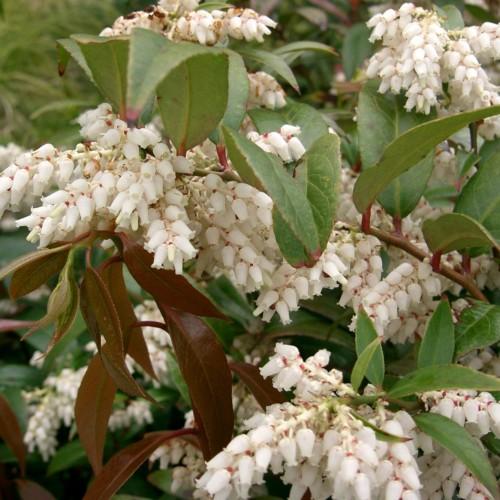
coastal doghobble
Leucothoe axillaris
Cycle:
Perennial
Watering:
Average
Hardiness Zone:
6 - 9
Flowers:
Flowers In Spring
Sun:
Part shade
Soil:
Well-drained
Cones:
Yes
Leaf:
Yes
Growth Rate:
Low
Maintenance:
Moderate
Drought Tolerant:
Yes
Salt Tolerant:
Yes
Thorny:
Yes
Care Level:
Medium
watering
Coastal doghobble (Leucothoe axillaris) should be watered deeply but infrequently. When watering, thoroughly saturate the soil and let the top 1-2 inches of soil dry out before watering again. Water in the morning or early evening to minimize the risk of fungal diseases due to nighttime moisture remaining on the foliage. During its active growing season ( spring and summer ) water at least once or twice a week. During the winter months, watering should be reduced to once every other week, but never completely omit watering.
sunlight
In its native region, coastal doghobble (Leucothoe axillaris) prefers moist soil and understory shade from conifers and hardwoods. In areas with significant summer warmth, it should receive dappled sunlight, from 4 to 6 hours of sun a day. It's best to provide gentle morning sunlight and avoid intense, direct afternoon sunlight as much as possible. It is also important to be mindful of water needs and provide ample irrigation to keep the soil moist and cool. In cooler regions, coastal doghobble can often tolerate full sun.
pruning
The coastal doghobble (Leucothoe axillaris) is best pruned in early spring, before growth begins. Pruning should be light and selective, to remove dead or diseased branches and to keep the plant's size and shape desired. Avoid removing more than 1-third of the plant when pruning. Sometimes it is also necessary to remove any crossing branches to ensure good air circulation throughout the canopy. Rejuvenation pruning may be necessary every 3 to 5 years by cutting back older branches to the ground to encourage young, vigorous growth.
